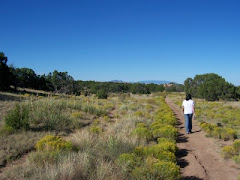 Summer's End by Audrey Coulumbis.
Summer's End by Audrey Coulumbis. The author's spare, strong writing style brings to life a difficult time in America. The summer Grace turns thirteen is when everything changes. The Vietnam War is raging, and Graces brother, Collin, is drafted. But Collin decides to take a stand and burn his draft card, igniting a war within the family. Grace suddenly finds herself bewildered and angry, thrust into a turbulent political climate. The war is everywhere, and Grace quickly learns that she cannot escape it, no matter how hard she tries. The first-person, present-tense narrative conveys powerful emotions with the simplest of words. Grace is jealous of her brother, misses him, and is mad at him, and it all rings true. She comes to realize that all choices are hard, and that while people you care about don't always do what you think is right, it is important that families stay together.
 A Group of One by Rachna Gilmore. This site has excellent notes
A Group of One by Rachna Gilmore. This site has excellent notes on the book; scroll down to the bottom for notes. The author has a very good website
here.
 Sliding Into Home by Dori Hillstad Butler.
Sliding Into Home by Dori Hillstad Butler. After she moves with her parents from Minneapolis to a small town in Iowa, 13-year-old baseball fanatic Joelle Cunningham cannot believe that she's not permitted to play on her new middle-school's baseball team. Convinced that girl's softball is not an adequate alternative to baseball, she starts a one-girl campaign to change the small town's rules, and her protest eventually expands into a community conflict that is televised on the local news. Determined Joelle is a fine protagonist. Readers will be caught not only by her drive to play ball and her willingness to take risks but also by her passionate commitment and the broadening vision that doesn't allow her to settle for just being the one female on an all-male team. Although there is only occasional play-by-play coverage of baseball games, the well-paced plot will engage readers, who will be moved by the story of a young teen who stands up for what she believes and goes after what she wants.
Booklist.
 We had a wonderful and educational trip to Tucson for spring break, and we'll cover many aspects of that trip, but let's begin with the state flower of Arizona...the saguaro cactus, pronounced sah-wa-ro. It's impossible to find the saguaro cactus above 3,400 feet because they thrive in intense heat. The giant of cacti is found only in the desert of Arizona and if anyone damages one there is a fine of $10,000 imposed because the saguaro is a protected species. When the saguaro reaches 75 years old it is at least 15 feet tall.
We had a wonderful and educational trip to Tucson for spring break, and we'll cover many aspects of that trip, but let's begin with the state flower of Arizona...the saguaro cactus, pronounced sah-wa-ro. It's impossible to find the saguaro cactus above 3,400 feet because they thrive in intense heat. The giant of cacti is found only in the desert of Arizona and if anyone damages one there is a fine of $10,000 imposed because the saguaro is a protected species. When the saguaro reaches 75 years old it is at least 15 feet tall.













